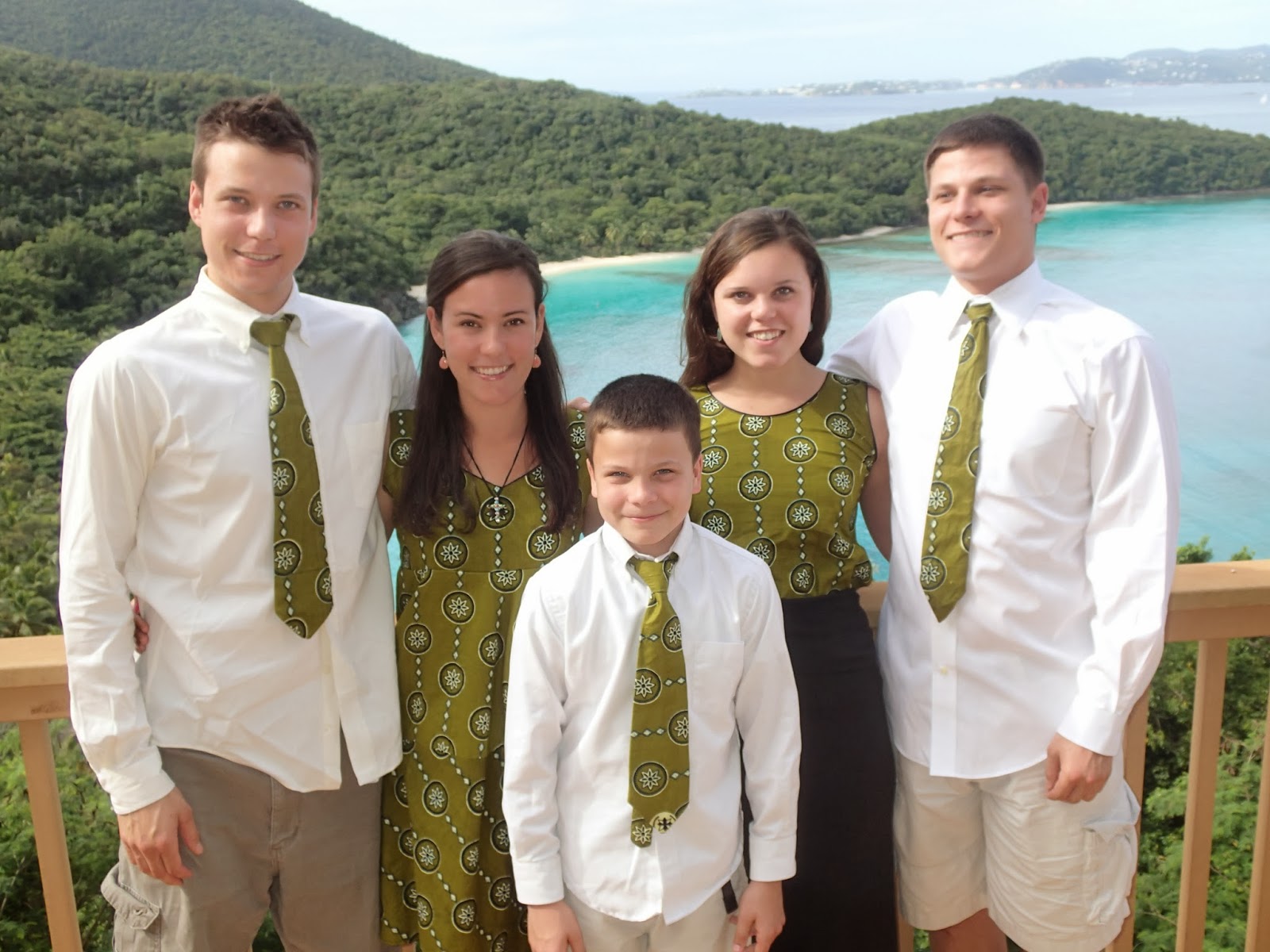----------------------------------------------------------------------
Tabaski
October 5th
Tabaski is the biggest holiday of the Senegalese year. Called Eid al-Adha elsewhere, it celebrates the day that Abraham was faithful enough to God to kill his firstborn child for Him when he asked, and God rewarded his faith by having him kill a ram instead. It doesn't sound like the happiest situation, but just wait until I talk about the Thanksgiving story later in the series. Anyways, like many holidays, the celebration has taken on a life of its own. Clothes are an incredibly important part of Senegalese culture and being clean and well dressed is essential to be respected in this society. At holiday time, clothes and appearances again take a central place. Young girls and boys all get a new outfit for the day, which in Katote means traditional complets for the girls and new polos and jeans for the boys. For adult men and especially women, the tabaski outfits are downright extravagant. First, women spend the entire week leading up to the event and even before then getting ready for the day. It was all I could do to get my very fashionable young health workers to focus on malaria instead of their dress orders at the end of August. You have to secure a tailor to make your outfit at least a month in advance and many of them work around the clock to get everything done. In the week before, women henna their feet and hands and get their hair braided. Buckets of fake hair, or mess, abound in everyone's yard as it is braided or sewn into people's heads. Even I got into it this year and consented to have my hair braided.
But, back to the food. One thing that has stayed absolutely true to the origins of the Tabaski holiday is the sheep sacrifice. For two months before Tabaski, sheep are shipped all around the country, mostly from the Fuuta where I and most of the herders live, to places where they don't regularly have herds, like Dakar. It makes for an interesting transportation experience and far too many of my clothes smelled like dirty sheep after the travels of our malaria tournee. Sheep meat isn't my favorite but for the past two years Tabaski has fallen during starving season so everyone is very excited for the feast. This year, I took careful notes for a recipe and took a rough timeline of the events:
morning: pull extra water to use for all the extra bathing and cooking
10:30: kill the first ram and start to skin him (a man's job). Peel onions and potatoes (a woman's job). Depending on how many kids you have, start washing them.
11:30: the ram has been skinned and cut down from the tree branch, the blood has been buried. The men move onto the neighbor's house to kill their ram. The kids are washed and dressed in their new clothes and start to roam the streets. Keep peeling your buckets of onions and potatoes and start to chop them. People will be stopping by all morning to greet you with the special Tabaski greetings.
11:35: We have been looking at food all morning and I'm so hungry I'm shaking.
11:45: Put your biggest pot on the fire.
12:30: First meat snack. There is nothing like freshly killed fried meat.
12:55: At the exact moment the cover is taken off the bucket of onions you've been cutting for hours, a soccer ball lands in it. The biggest dirt clumps are removed, the bucket in re-covered and the kids are sent away to play elsewhere.
1:15: Start cooking (see recipe below)
3:00: Shower, perfume yourself, put on your new outfit and gaudy amounts of jewelry and makeup
3:30: Have your first portion of the tabaski meal.
3:50: Your feede, or age group, is finally ready and so you bring a bowl over to the house of one of your feede members. Everyone admires each other's outfits, then peanuts, mint candies and packaged cookies are served and finally you eat. Following the meal is juice and attaya, and you go home. You shower, fold up your fancy clothes, eat some lunch leftovers, and go to sleep.
Tabaski Feast Stew
Ingredients are not provided for this as I imagine you are not cooking an entire ram for 30 people. Just add what looks right. Amounts of spices and the onion/potato/meat ratios vary from cook to cook here anyways.
1. Brown large chunks of meat in oil, remove.
2. Mix a small amount of the chopped onions with boullion cubes, french mustard, freshly ground pepper, and salt. Pound lightly in your woyru, or pounding vessel (like a large mortar and pestle)
3. Add uncooked onion mixture to hot fried meat. This is your snack while you are cooking, enjoy.
***
1. Mix the rest of the onions with boullion cubes, mustard, vinegar, salt and pepper. Let rest, covered.
2. Salt the cubed potatoes in water. Let sit.
3. Brown meat in oil in a large pot, then add water to fill the pot halfway. Let simmer.
4. After 30 min, add the onions.
5. After 10 min more, add the potatoes.
6. Simmer lightly until potatoes are soft. Everything will be mushed together in a stew-like consistency.
7. Serve and eat communally.
For photos of Tabaski, click here or check out my "photos" tab








































